When Albert Einstein proposed general relativity as an explanation for gravity in 1915, many scientists were unconvinced. The theory was difficult to understand, and at the time, there was little available evidence suggesting that general relativity was a more accurate explanation than Newton’s theory, which had held sway for more than 200 years. However, British astronomers Arthur Eddington and Frank Dyson1 soon worked out an additional test to gather more evidence on relativity — observing starlight as it passed close to the sun during a solar eclipse.
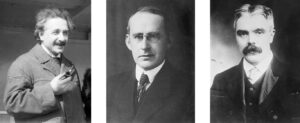
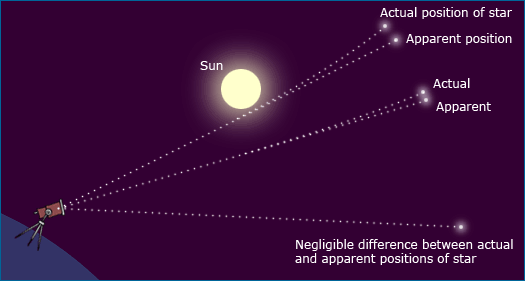
- Comparing outcomes. If general relativity were at work, it would mean that starlight passing close to the sun should seem to have a bent path and that the apparent position of a star observed from Earth should shift a certain amount depending on how close to the sun the starlight passed. Thus, Eddington and Dyson set up their test to compare the apparent positions of stars during a solar eclipse (when their light passes close to the sun) to the apparent positions of the same stars at night (when their light does not pass close to the sun). In addition, they were able to compare the shift for stars with different positions relative to the sun. Einstein’s theory led them to expect that the shift would be greatest for stars whose light passed closest to the sun.
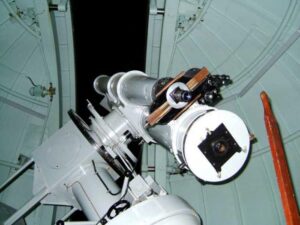
- Controlling variables. The researchers wanted the only difference between the two sets of observations of the stars’ positions (eclipse vs. nighttime) to be how close to the sun their light was passing. That meant making the eclipse and nighttime observations with the same sort of telescope lenses, screening the telescopes from the wind, taking precautions to avoid distorting the film that recorded the stars positions when it was developed, and even using the same brands of photographic plates to record the positions. But of course, it’s difficult to control all the variables that might influence one’s observations. For example, the heat of the day may have caused one of the telescope mirrors to expand, distorting the images it produced during the eclipse relative to the images it produced during the nighttime observations. Eddington and Dyson had tried to control for this by setting up screens around the telescope to shade it during the day — but this turned out to be insufficient to control the temperature variable. In the end, they had to ignore observations made with this telescope because they provided an unreliable comparison. Shifts in apparent position could have been caused by relativistic mechanisms (as proposed by Einstein) or by mirror distortions.
- Avoiding bias. To minimize the role of subjective judgments in their measurements and the bias that might accompany them, the researchers used a set procedure and fine-scale measuring devices to figure out how much the apparent star positions shifted. One set of images from a smaller telescope required a more elaborate procedure, and in this case, they had two different people take the same set of measurements on the images. Then they averaged the results together to minimize the systematic error that might have been introduced by one individual’s measuring technique.
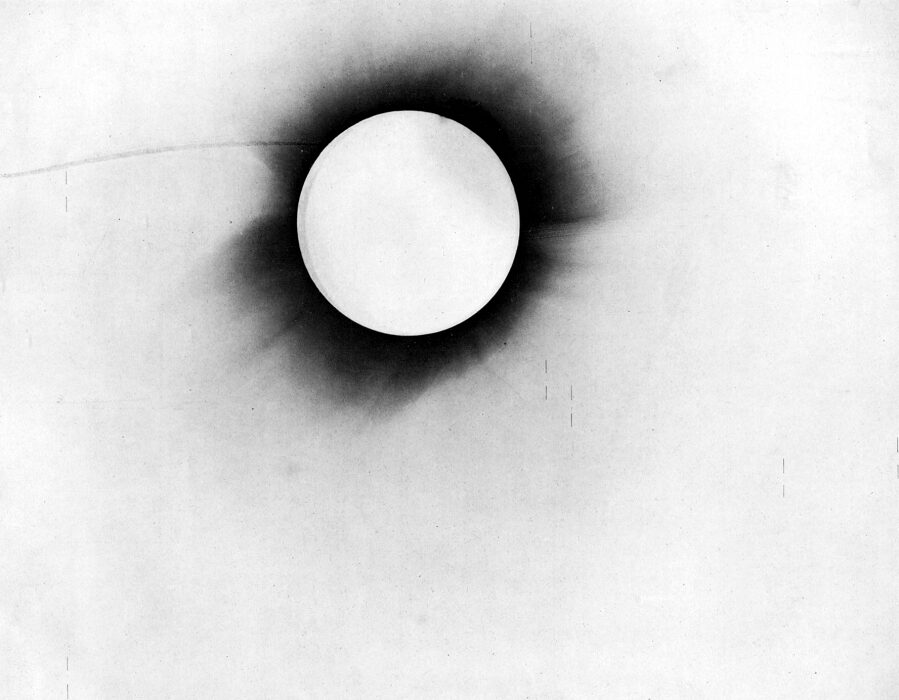
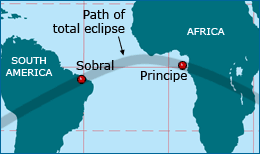 Distinguishing chance from real differences. To make sure that any differences they found were not due to random flukes, Eddington and Dyson didn’t rely on just one set of star measurements. Instead they took measurements from three different telescopes (two positioned in Brazil and one set up on an island off the west coast of Africa) and took many exposures with each telescope. They reasoned that they could be confident in their results if all these different images led to the same conclusions about the apparent shift in the positions of the stars — and they also wanted to hedge their bets in case the eclipse wound up being hidden by cloud cover in one of the locations. In addition, the researchers calculated the statistical error of each of their measurements in order to figure out how close their estimates were getting to the true values.
Distinguishing chance from real differences. To make sure that any differences they found were not due to random flukes, Eddington and Dyson didn’t rely on just one set of star measurements. Instead they took measurements from three different telescopes (two positioned in Brazil and one set up on an island off the west coast of Africa) and took many exposures with each telescope. They reasoned that they could be confident in their results if all these different images led to the same conclusions about the apparent shift in the positions of the stars — and they also wanted to hedge their bets in case the eclipse wound up being hidden by cloud cover in one of the locations. In addition, the researchers calculated the statistical error of each of their measurements in order to figure out how close their estimates were getting to the true values.
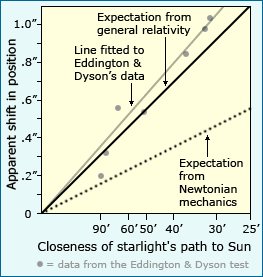
Though they had to eliminate the results from one telescope because they couldn’t control the temperature well enough, Eddington and Dyson’s test ended up supporting the theory of general relativity. The apparent positions of the stars shifted about the amount that Einstein’s theory predicted that they would. With the development of new equipment and techniques in the following 70 years, scientists were able to more precisely measure star shift due to gravitation and found that the results even more strongly supported general relativity.
To learn more about general relativity and the eclipse test, check out our side trip on Illuminating relativity: Experimenting with the stars.
1Dyson, F.W., A.S. Eddington, and C. Davidson. 1920. A determination of the deflection of light by the sun's gravitational field, from observations made at the total eclipse of May 29, 1919. Philosophical Transactions of the Royal Society of London. Series A 220:291-333.
